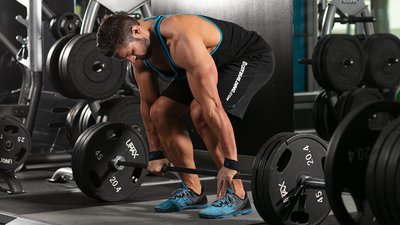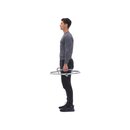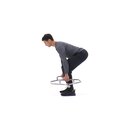Ask around, and the "secret" to getting stronger seems like no secret at all. Just combine big weights on barbell lifts, long rest periods, fairly simple programming, limit yourself to no more than 5 reps per set, and boom: PRs aplenty.
While that's the common approach—and one that has its time and place—it's certainly not the only one. The ever-surprising, always-adaptable human body responds unpredictably to the stimulus we provide it, leaving much room for experimentation when it comes to gaining strength.
Here are five unique options from strong lifters that you can incorporate into your current workout regimen today. Use them to continue powering up with the traditional approach stalls, or before it ever gets the chance to!
1. Mix carries with strength work
"Odd object training" is no longer just the domain of burly dudes trying to be the world's strongest. It's also become mainstream training for those of us who are just looking to be stronger than we are now.
Why? Because moves like the farmer's carry, where you hold a heavy object in some difficult way—at the chest, at your side, overhead, or in the rack position, for instance—and walk for distance or time, are both brutally effective and brutally simple. Just find your preferred object, and move it until you can't anymore.
Strength coaches swear by carries to add muscle, burn calories, and strengthen and unite all those little tiny stabilizer muscles you've been ignoring. This means you'll find yourself sore in some new places, and your core will definitely work overtime. But like magic, people get stronger and more muscular after a few weeks or months of consistent carry work.
"Utilizing the big lifts to get stronger is a great strategy, but there is lots of room for error," explains RSP athlete and bodybuilder Grant Weeditz. "Farmer's walks act as an insurance policy, protecting the spine and hips from mistakes that inevitably happen. Challenging carries either at the side, from a racked position, or overhead are all the kind of core work that will actually make a difference in the rest of your training."
You'll find plenty of articles recommending you do a few sets of carries at the end of the day, but Weeditz's favorite method is to superset them with heavy lower-body moves like squats, lunges, or Romanian deadlifts.
"I've found alternating core-activating movements with traditional lower-body lifts helps better stabilize everything from the hips up," Weeditz explains. "Holding or bracing against heavy weight on a main lift can lead to unintentional deactivation of muscles we need to help us stay upright, strong, and most importantly, safe. Add a carry between any big lower-body work to activate and brace for bigger gains."
The best part? All you need is a single weight. You can use a 70-pound kettlebell like Weeditz does, but a dumbbell, sandbag, weight plate, or any other heavy thing will also work. It will feel awkward, and you will struggle, but that's the point!
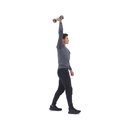
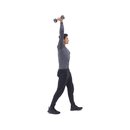

BodyFit
$6.99/month- 2,500+ expert-created single workouts
- 3,500+ how-to exercise videos
- Detailed workout instruction
- Step-by-step workout tips
- Training at gym or at home
- Access to Workout Plans
- Access to Bodyfit App
- Store Discounts
Already have a Bodybuilding.com account with BodyFit? Sign In

What comes with BodyFit?

- Instructional Videos
Don't risk doing a workout improperly! Avoid injury and keep your form in check with in-depth instructional videos.

- How-to Images
View our enormous library of workout photos and see exactly how each exercise should be done before you give it a shot.

- Step-by-Step Instructions
Quickly read through our step-by-step directions to ensure you're doing each workout correctly the first time, every time.
2. Forget how to count
"Many times, even the most advanced, skilled trainers and athletes hit plateaus," admits RSP Nutrition Athlete Kieon Dorsey, a trainer and owner of online training site Nostrugglenoprogress.net. "At that point, they'll change rep ranges, exercises and angles, and rest periods. But no matter what, they'll still count sets and reps—and this might be what's holding them back."
Instead, Dorsey suggests "forgetting how to count" during your training sessions. "When I find myself hitting plateaus, I switch it up," he says. "I remember that my muscles can't count and my mind is stronger than any muscle. The power of our thoughts dictates how long, how much, or how many of most things we do. Even if we exceed that predetermined quantity, we still usually only deviate a small range. So as an alternative approach, I'll pick two to three exercises I feel I get the most results from or my target areas for that day and go to work until I literally can't do any more."
As an example, instead of 4-5 sets per exercise of 8-12 reps at a precise percentage-based weight, you'll pick an easy to load and remember—say, 225 on a deadlift variation or a pair of 50-pound dumbbells for presses—and go to town until the fatigue and burn make you stop, not a number of reps.
"Training this way, you'll take away two things," Dorsey says. "First, you’ll realize that you're mentally and physically stronger than you have been restricting yourself to. Second, you'll likely realize that you probably spend more time in the gym doing less effective exercises than you should."
Want to try it? Here are three approachable movements that will hit your whole body in no time:

BodyFit
$6.99/month- 2,500+ expert-created single workouts
- 3,500+ how-to exercise videos
- Detailed workout instruction
- Step-by-step workout tips
- Training at gym or at home
- Access to Workout Plans
- Access to Bodyfit App
- Store Discounts
Already have a Bodybuilding.com account with BodyFit? Sign In

What comes with BodyFit?

- Instructional Videos
Don't risk doing a workout improperly! Avoid injury and keep your form in check with in-depth instructional videos.

- How-to Images
View our enormous library of workout photos and see exactly how each exercise should be done before you give it a shot.

- Step-by-Step Instructions
Quickly read through our step-by-step directions to ensure you're doing each workout correctly the first time, every time.
The options are limitless. Pick a lower body move, a push, a pull, and go for broke.
3. Add a negative or isometric set
Typically, negatives are used for just a few reps at the end of the final set of an exercise. You reach failure, and then a partner will help you through one, two, or three additional reps where you’re only controlling the lowering portion while he or she assists you through the positive portion of each rep.
That's a fine technique for muscle growth, but the goal here is strength. Studies have revealed that you can produce 20 percent or more force eccentrically than concentrically. This means you're limiting yourself by sticking with a weight you can handle for regular up-and-down reps on every set.
To break free of that restriction, try this: Add a negatives-only set to the very end of your main exercise for a body part. Have a lifting partner help you get the weight into position, and keep their hands on the bar while you lower the weight slowly and under full control. Then, they lift the weight up with only minimal help from you. After all the lifting you've already done, you don’t need to do those negatives with 20 percent of your one-rep max to get results. Just 3-5 reps with 5 percent to 10 percent extra is plenty.
A bit unsure about doing this with, say, squats? Understandable. In that case, try an isometric front rack hold, a favorite technique of RSP athlete Curtis Bartlett, owner of Police Fitness.
"Many clients often struggle with the core and lower back strength portion of many big lifts, including the front squat or box squats. They have the leg power, but not the core to keep their form tight," says Bartlett. "By adding front rack holds, it allows them increase to the weight dramatically over their typical front squat session, control their breathing and build not only the core strength, but the confidence to push the limits on their squats."
When you're loading up the bar for these, don't be afraid to think big. "For weight selection, I have people start with their typical working squat weight," Bartlett says. "Going up by 50-pound increments each set, I allow people to gain confidence in their ability. Everyone is surprised on how much they can actually hold and normally end up over double their normal front squat weight."
Using negatives and isometrics this way, not only have you stimulated the muscle fibers that will make you stronger, you've also experienced that heavier load firsthand, making it less intimidating down the road.
4. Try rest-free rest periods
Strength-focused training typically involves more rest than reps. However, when you've plateaued on that approach, you may want to try a phase where you turn that approach on its head, suggests RSP Athlete Hannah Eden, founder of PumpFit Club in Fort Lauderdale, Fla.
"If you've put in your time on the typical strength model, use your rest periods for 1-2 minutes of intense cardio activity that will bring blood into the area you're training," Eden suggest. "I like jumping rope or burpees for the upper body, and sprinting or box jumps for legs. The blood carries in more oxygen and nutrients, which generates muscle growth and, in turn, strength gains."
Of course, this approach probably won't work well alongside grinding singles or doubles at high weight. Eden suggests increasing your training volume, doing more reps while slightly dialing back your weight selection, either for a full 4-6-week training phase, or for an occasional day within your normal strength schedule.
"Low-rep sets with near-max weight will enhance strength, but more reps at lighter weights, say 65-75 percent of your one-rep max, will also stimulate a muscle response," she says. "Finding space in your program for both can help you keep progressing for the long run."


